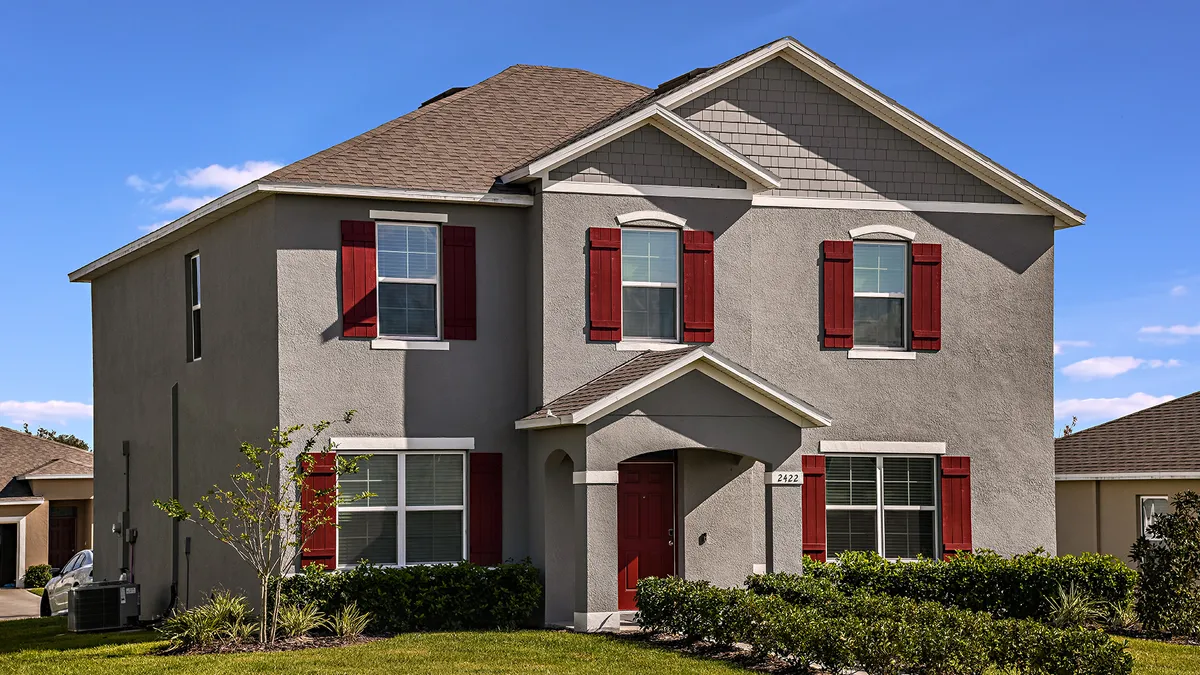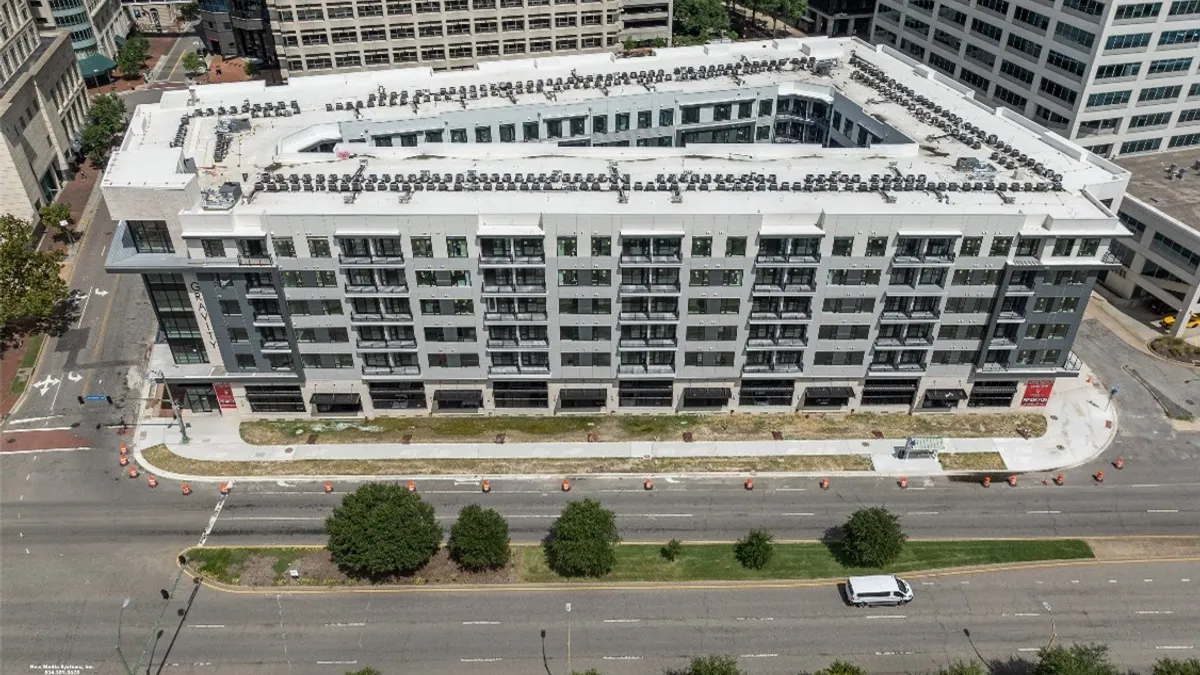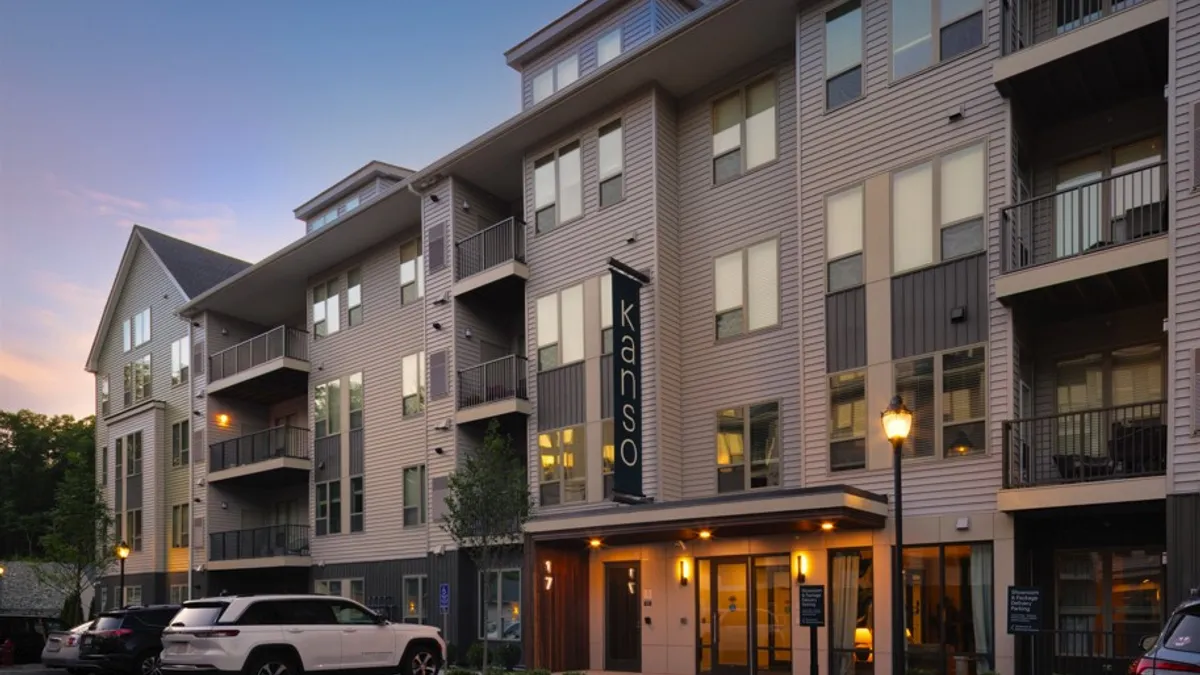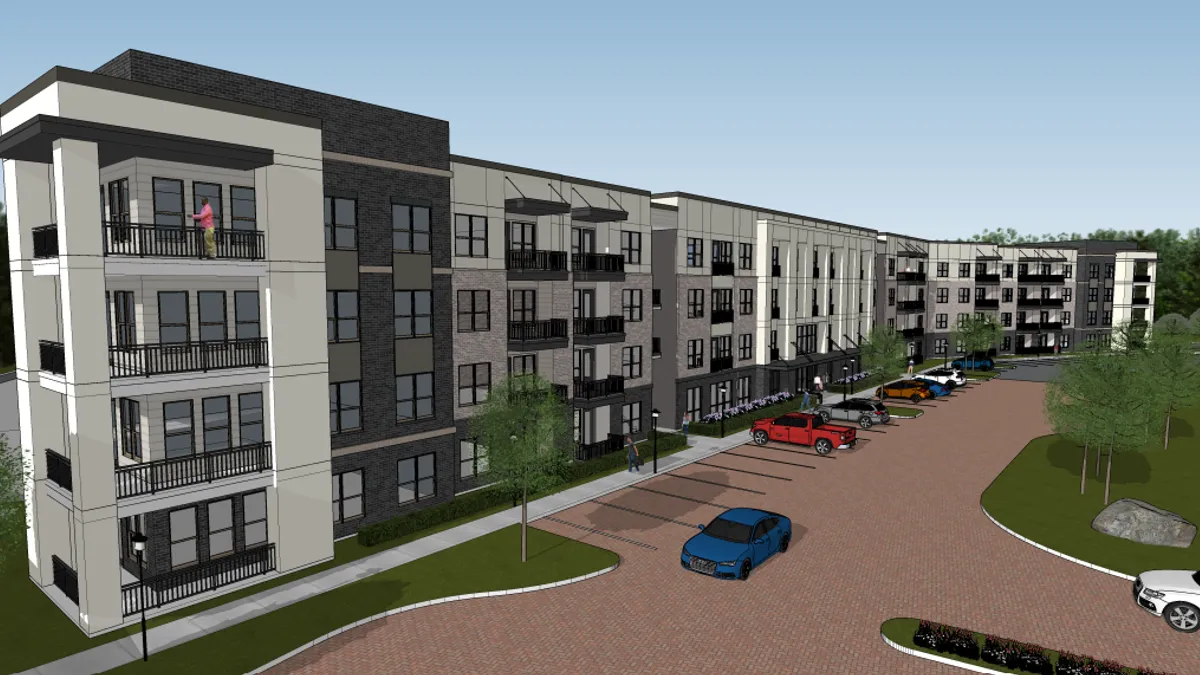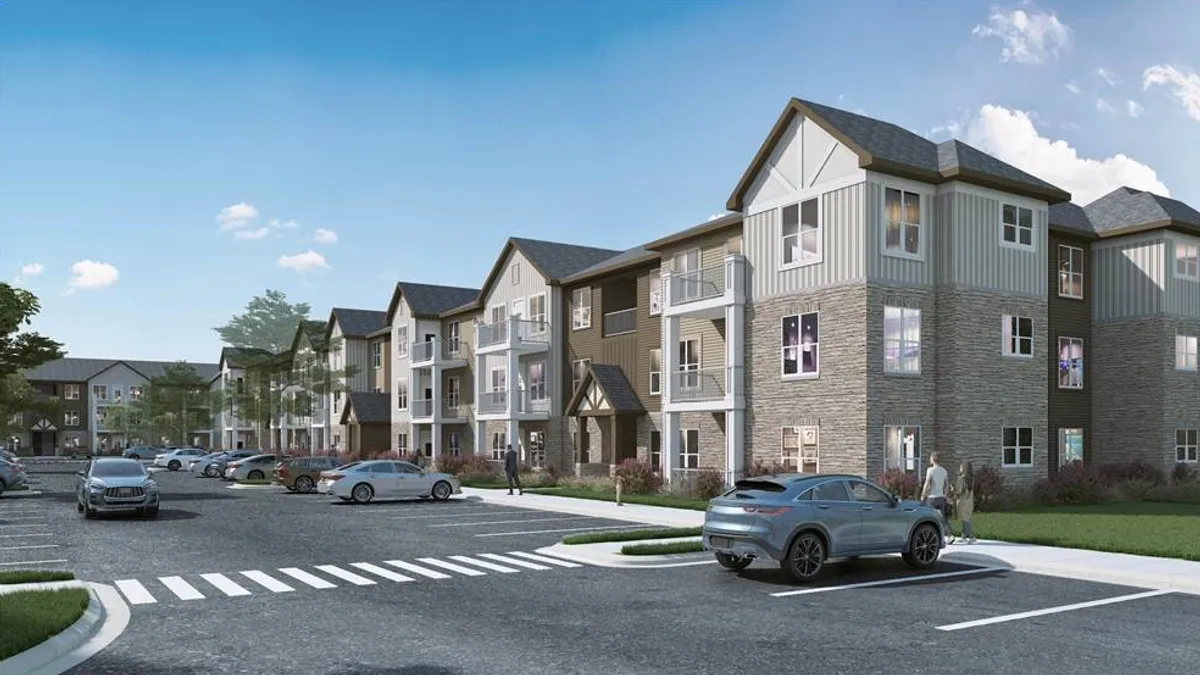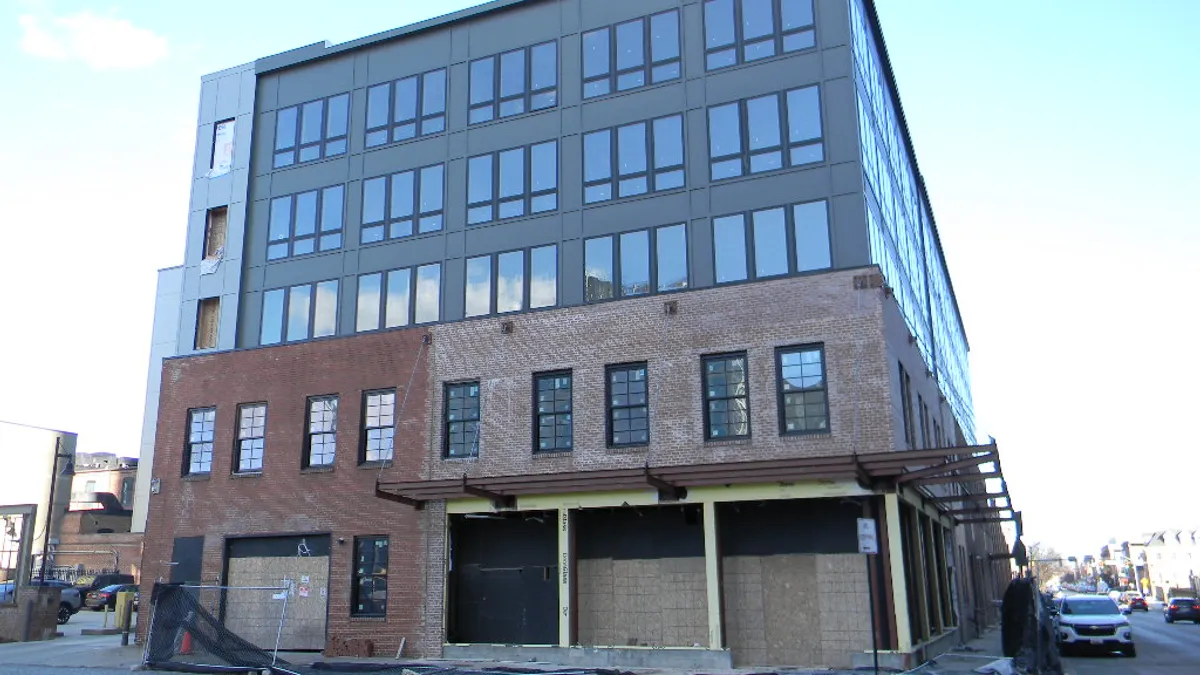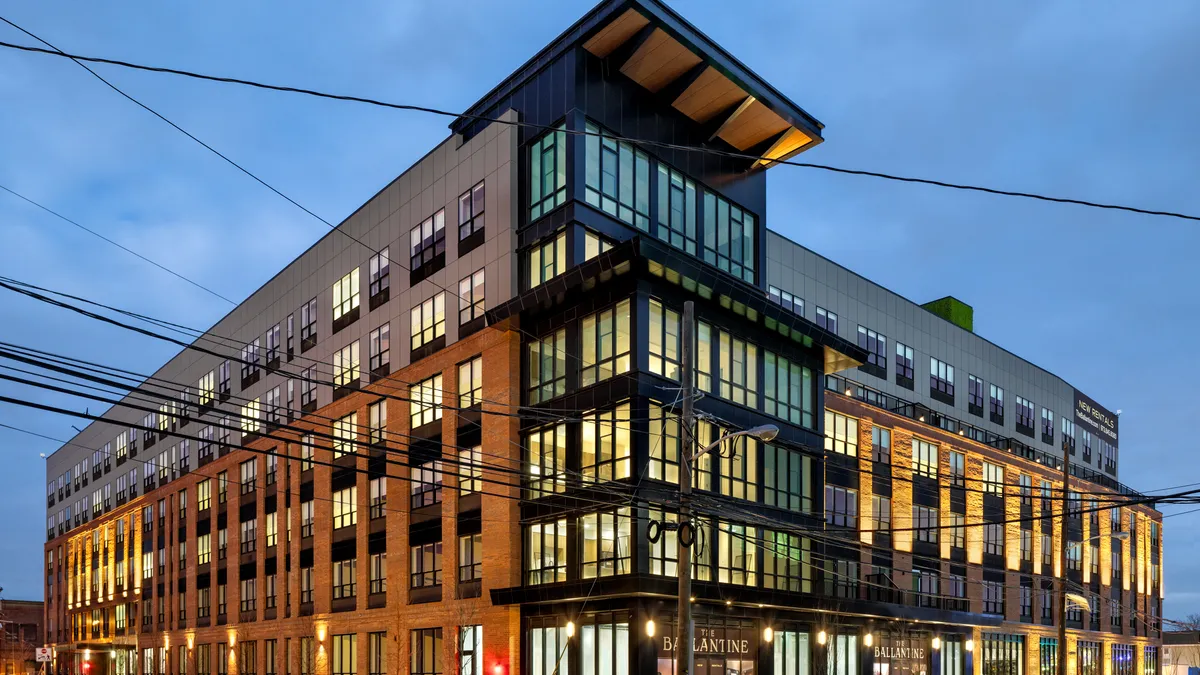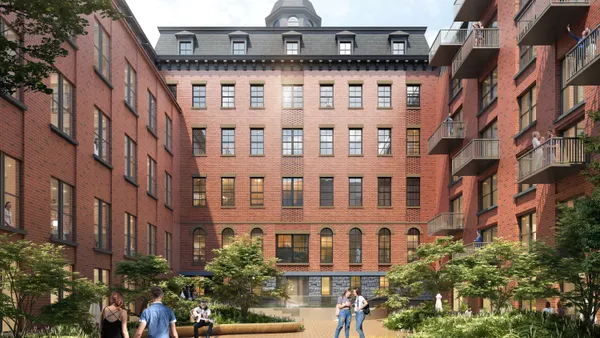As of this spring, Charleston, S.C.-based real estate firm Greystar sits at the top of three of the National Multifamily Housing Council’s annual Top 50 lists for the first time, with 108,566 units owned, 798,272 under management and 9,151 new units developed in 2023 in the U.S.
While Greystar has 18,000 build-to-rent homes under third-party management, in-house build-to-rent construction and development is among its newest ventures under the Summerwell by Greystar brand. The company has a select number of properties up and running and thousands of single-family rental homes and townhomes in the planning and development stages. It intends to operate 17 build-to-rent properties across the country by the end of 2025.
The build-to-rent side of the business is meant to take advantage of strong demographics and demand, Andrew Ord, a Dallas-based managing director for Greystar’s development services, told Multifamily Dive.
“Millennials are aging,” Ord said. “They're expanding their families, maybe they need a third bedroom, maybe want to move outside of the city limits where they can have something a little bit more affordable that meets their needs and conveniences.”
Here, Ord talks with Multifamily Dive about the company’s build-to-rent plans, new development targets and programming philosophy.
This interview has been edited for brevity and clarity.
MULTIFAMILY DIVE: How many build-to-rent properties do you have in development?
ANDREW ORD: In terms of our current footprint, we third-party manage roughly 18,000 homes. So those are homes that we manage on behalf of other owners. We currently have about 4,500 homes under construction and development, and about another 2,000 in different stages of pursuit.

It’s still very early days in this space, and if Greystar is going to do something, they're going to do it the right way. So we're being very thoughtful. There’s a few under lease-up right now that are doing great. And we're happy and we're continuing to learn how best to approach this space.
Which markets are you targeting for new development?
It's a similar story as with other developers. We’re looking at primarily Sun Belt markets across Florida, Atlanta, Texas, Arizona and California. And we'd love to be up in the Mountain West as well.
To be honest, there's demand everywhere for this product. I don't know if we're as geographically constrained, just due to our footprint as a whole within Greystar. We've seen opportunities in the Chicago area, and we have a deal up in Minneapolis. So we're looking everywhere, but the deals that seem to make the most sense presently tend to reside in the Sun Belt.
How have the projects that are opening now informed your plans for the future, as far as reception and what people like and don't like?
This is a very interesting space where you're bringing together two worlds — the traditional home building-for-sale world and the institutional, smaller format apartment-for-rent space.
There's lots of learning to be had when you bring two larger business models together. So we're just trying to be thoughtful in how we program that. We have walk-in laundries where those are appropriate on three- and four-bedroom homes, something you don't typically contend with on the multifamily side of things, and pullout trash compartments, spacious corner pantries and larger-capacity refrigerators.
We're also trying to be very mindful of convenience as we think about proptech, digital door locks and smart thermostats that will ultimately make things more convenient for the people who are living there.
What are some of the biggest challenges to expanding Greystar's build-to-rent presence?
It comes down to some some macroeconomic factors like costs and interest rates. I think that applies in any sort of development. More specifically, it's making sure that we're thoughtful and we meet the market, that we provide an affordable product that is well located, with good schools and of high quality. It comes down to making sure we educate the municipalities on the product itself. This truly is kind of a missing middle.
We want to do something purpose-built, you know, thoughtful from the ground up, that is an additional housing option for people that are maybe waiting to buy, renters by choice, or are in the area temporarily. This is an opportunity, I think, for Greystar to create that stability for people, with conveniences that they might not otherwise be able to attain.
How do you anticipate the build-to-rent space will change in the near future?
I think we'll just continue to get smarter about how we do it. Like I mentioned, we do have the clashing of two worlds, the for-sale homes and the institutional rental business. And I think, at the benefit of the end user, we'll continue to get smarter with how we create conveniences for that end user, by means of proptech and design features and amenities that truly accommodate the desires of that person that wants to live there.
Some of the big consumer preferences we see are people wanting their own four walls — they want privacy. They want a private backyard, they want a two-car garage, these are things that we'll continue to design into our product and be able to deliver more efficiently at a cost that's affordable.



